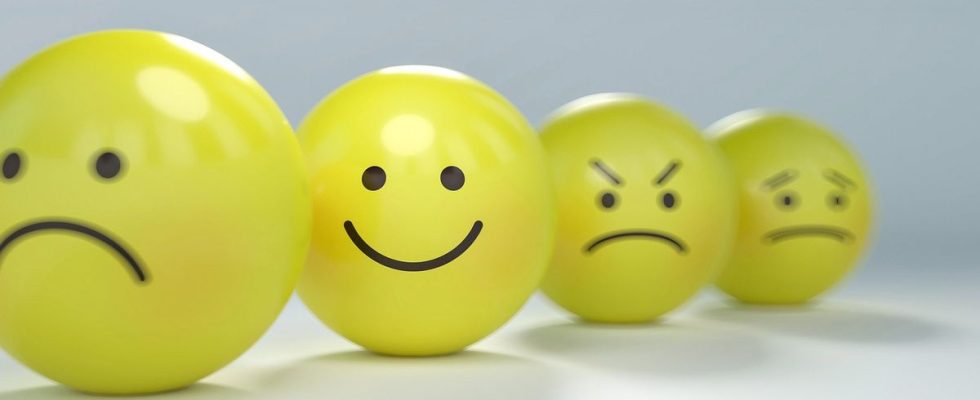“I have all the symptoms of hyperactivity”, “I have just discovered that I have ADHD” or even “I am sure I am bipolar”… More and more Internet users today seem to be discovering pathologies or mental disorders behind their screen, thanks to social networks. On TikTok, but also YouTube, Facebook or Instagram, “mental health” influencers, or simple Internet users who share their personal experience, explain how to self-diagnose and provide their advice in 30 seconds flat.
A trend that gained momentum after the Covid crisis, so much so that the hashtag #selfdiagnosis (self-diagnosis) now has several million views on TikTok, as do the keywords #bipolardisorder (bipolar disorder), #HPI (high intellectual potential), #autism (autism), #depression or #anxiety. The hashtag ADHD (attention deficit disorder with or without hyperactivity) reached nearly three billion views on the Chinese platform. “Here are six signs or symptoms of ADHD that you should look for if you think it is affecting your life or that of someone you know”, explains in particular a video, abundantly relayed on TikTok. In the comments, many panicked internet users – and above all persuaded – to find themselves suffering from this syndrome.
“We can finally talk publicly about mental health”
Many psychiatrists and psychologists have also noted this trend towards self-diagnosis and self-medication on the platforms, which have become a kind of “psychiatric office” just a click away. “With a group of colleagues, but also with several associations, we became aware of this phenomenon through the people who came to consult at the hospital. This concerns in particular attention disorders with hyperactivity, bipolar disorders but also other pathologies such as autism, ”explains Jasmina Mallet, psychiatrist at the Public Assistance of Paris hospitals. “Some explain having followed the advice of influencers, who film themselves and offer advice for treatment”.
The possible anonymity on social networks has made it possible to gradually free up speech around mental disorders. “The positive side today is that we can finally talk publicly about mental health, about things that are not going well. This is called the ” sadfishing “, the fact of talking about his emotional problems on the Internet. It’s good to say when things are not going well, in opposition to this tyranny of well-being or happiness eternally displayed on social networks. But as always, there are deviations, ”explains Michael Stora, psychologist and psychoanalyst, specializing in digital practices.
“It did me good to try to find a cause for my discomfort”
Many Internet users – most of the time quite young – wrongly self-diagnose certain pathologies. Chloe, a 19-year-old student, was sure she had attention deficit disorder [trouble qui atteint le champ de l’attention et de la concentration, et peut s’accompagner d’impulsivité et d’hyperactivité], after seeing a video in which the main symptoms were listed. After talking to her parents about it, she decides to go see her general practitioner. “He just told me that I was fine. And above all, only a specialist could make such a diagnosis, which requires several consultations, ”explains the young woman, who today puts the scope of this kind of video into perspective. “At the time, it did me good to try to find a cause for my discomfort”.
Michael Stora also explains that he receives more and more young patients convinced of having mental disorders. “They bring me back Google pages explaining to me what they are suffering from. For them, being able to name their suffering is like a way of intellectualizing things, and ultimately it lowers their level of anxiety. It is a strategy, a defense mechanism to neutralize anxiety. I very often try to explain to them why their self-diagnosis is wrong”. According to the psychoanalyst, social networks have brought to light a dimension that is difficult to fill in real life. “Making a real medical diagnosis takes time. Only here, people today – especially young people – want quick answers, which they often think they can find (wrongly) online”.
A “glamorization” of mental disorders
Another element to understand this new trend. Having a mental illness would have become “very fashionable”. “Showing that we suffer, that we are different, is a way of showing that we exist, and ultimately of saying ‘love me’. And with the economic model of social networks, we very quickly come to a race for likes. So much so that today we could speak of a certain ”glamorisation” of mental disorders”, explains Michael Stora, who takes as an example the proliferation of TV fiction around these psychic disorders.
But for health professionals, this trend towards self-diagnosis is not to be taken lightly. “Only professionals can establish a diagnosis, and offer, as soon as possible, appropriate medical care”, recalls Jasmina Mallet, psychiatrist at the Public Assistance of Paris hospitals. “One of the risks is to fall into a form of symptom complacency, and not to start a real psychological follow-up”, adds Michael Stora. “One of the solutions would perhaps be for real professionals to be able to interact directly with Internet users in order to guide them”, considers the psychoanalyst.

